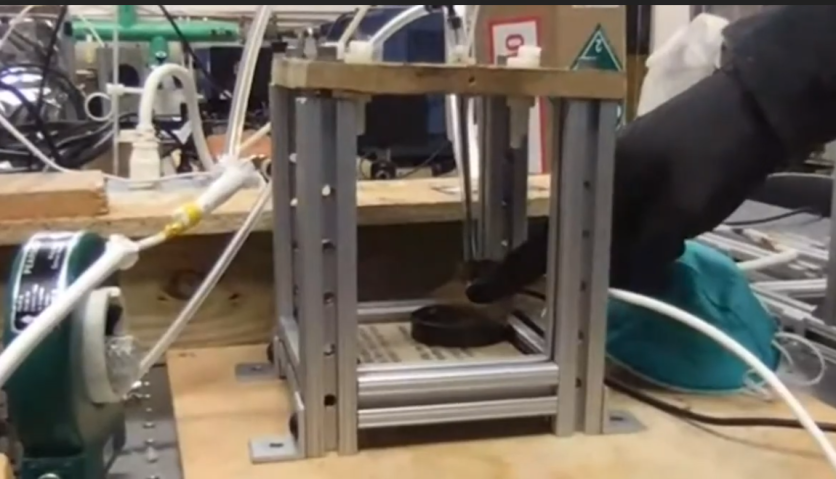Engineering professors at the University of Michigan are developing an ion-emitting wand that can quickly decontaminate hospitals and other public places. Its plasma beam can quickly kill viruses and bacteria in seconds.

This Ghostbusters' proton-pack-like wand can easily disinfect hard surfaces like alcohol and bleach, although these techniques cannot be used on fabric unless it is washed or soaked in the solution.
On the other hand, plasma is a dry approach with no residue, so it can also be used on soft materials like seat covers and beds.
The cold plasma jet
John Foster, a professor of nuclear engineering and radiological sciences, said that unlike detergents that require waiting for 5 to 10 minutes sitting on the surface before it reacts to pathogens, plasma sanitizes in a blink.
"With plasma, the gas is so highly reactive that you only need seconds of contact between the plasma and the surface in order to decontaminate," said Foster.
Currently, soft materials in hospitals are locked in specialized cabinets that use poisonous gasses such as ethylene oxide or hydrogen peroxide to disinfect.
Mirko Gamba, a professor of aerospace engineering, explains how the plasma jet can easily sanitize hospitals: "[We] propose a handheld device that the user could shine over the surface," said Gamba.
The device produces plasma by running gas such as air through a high electric field. This field then rips electrons off and tears molecules apart, creating a pool of charged atoms and molecule fragments that come out at the end of the wand.
Like combustion, the plasma destroys bacteria and viruses with oxygen-based ions pulling carbon out of their cell walls or protein cases. With such power, however, it would take 10 seconds before it could kill healthy cells--just in case someone stuck a hand into the plasma plume.
A plasma plume is a mix of plain old air with a little water vapor. "The hydroxyl radicals attack organic molecules, decomposing them into carbon dioxide and water," Foster said.
Meanwhile, they think that this can also be used to target particular viruses or bacteria by adding chemicals to the gas.
Thus, they aim to deploy the plasma wand towards the end of the coronavirus pandemic, but it may not be ready for at least a year. When it becomes available, it might also be used outside hospitals such as on airplanes or buses.
The NSF grant
The project already has quickly received funding from the National Science Foundation.
Foster, Gamba, and Mark Kushner, a professor of electrical engineering and computer science, said they will use the grant to test the portable plasma disinfectant concept and rush towards making a prototype.
One of the first orders of business is to explore the reactive molecular fragments in the plasma and discover how effective they are at killing pathogens. The plasma can then be adjusted to contain more of the most effective fragments.
They also want to characterize the UV light generated in the plasma, which can also kill pathogens and break down their genetic codes.
Once they know the important levers for tuning the plasma to kill different kinds of pathogens, they hope the concept can be licensed. Companies already have experience designing the power system that would go into the backpack.
Although the product may not be ready for another year, the goal is to deploy it towards the end of the current pandemic as COVID-19 is seen to remain a threat until 2022.
Meanwhile, the University of Michigan scientists have also developed a portable helmet system that turns hospital beds into a negative pressure room, protecting caregivers and saving ventilators.
ⓒ 2025 TECHTIMES.com All rights reserved. Do not reproduce without permission.




